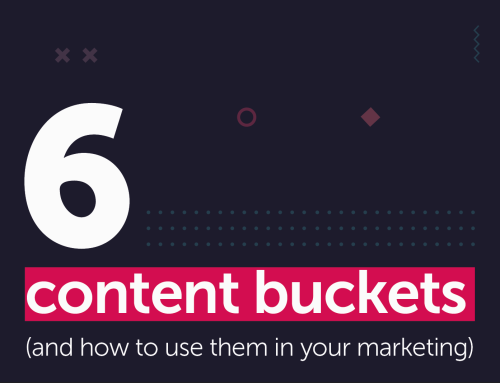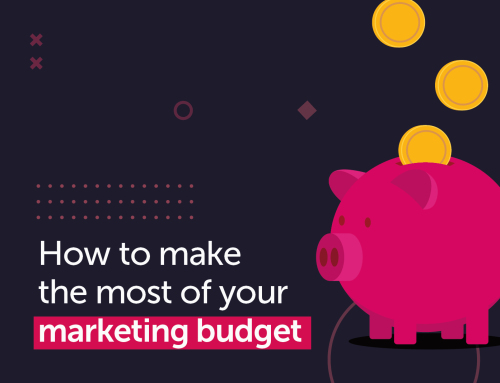
Did you know that 82% of companies actively use content marketing as part of their digital marketing strategy?
Content marketing is more hyped up than ever before — and for good reason. Content can help you establish your business as a thought-leader in your industry, increase traffic to your website and drive search engine results.
But before you actually start marketing your content, you first need to have some content to work with.
There are loads of different kinds of content: blogs, press releases, advertorials, website landing pages, email newsletters, social media posts, infographics, case studies, e-books, whitepapers, videos, podcasts…
The list goes on.
Blog posts are, undoubtedly, the most popular form of written content (more than three billion blog posts are published each year). And nine out of 10 companies use blogs to achieve their overall marketing goals — whether that be to generate more leads or drive traffic.
So, why is blogging so important for your business?
Well, for one, companies that blog get 55% more website visitors than those that don’t. Businesses with blogs also produce an average of 67% more monthly leads.
If you’re new to content writing, it can be a little daunting. Where do you start? And what makes a good blog post? There’s no secret formula to writing high-quality blogs, but here are eight tips to ensure you create content that resonates with your audience and leads to action…
1. Pick a topic
Obvious, right? Before starting any piece of content, you need to know what you’re writing about. Keyword research and tools like AnswerThePublic can help you find out what questions your audience are asking so that you can answer them in your blogs.
Although it can be tempting to pick a broad blog topic (save that for your whitepapers), you’re better off focusing tightly on one aspect of that topic. Take this blog as an example:
• Bad: How to improve your content marketing (too generic)
• Better: How to improve your written content (you now know we’re talking about written content, but that still doesn’t narrow it down enough)
• Good: How to write good blog content for your website (perfect — you know exactly what you’re getting)
Narrowing your focus can help you create clear, in-depth content that provides valuable takeaways. Having a single idea from the headline to the conclusion will also prevent ‘waffle’: aka saying a lot without really saying anything at all.
2. Do your research
Unless you’re already an expert in the topic you’re writing about, chances are you’ll need to do a bit of research before you make a start on your blog post. Especially in B2B writing, you’ll need to collect information, such as stats, from relevant third-party content (make sure you keep a note of the source URL — you’ll need it later for the all-important backlinking).
Once you’ve done your research, create an outline of your piece of content. Outlining your content helps you lay out your ideas, research and keywords in a logical order so that you can write a well-structured and optimised article. Similarly to our above point about keeping your focus narrow, make sure that each section discusses a single idea to ensure you provide valuable information that answers people’s questions. This is where headings and subheadings help.
3. Write an attention-grabbing title
If your blog title is weak and doesn’t resonate with the audience or make them want to know more, they won’t bother reading the rest of your blog. The best headings offer up specific information and give a little detail to draw people in — but stop short of telling the whole story.
Blog titles should typically be between five to 12 words but no longer than 60 characters. Of course, it’s not just about the length of your title. The words are important, too.
Make sure you include one keyword in the main heading (don’t use it again in the subheadings). You should then tie the rest of the content back to this title throughout the piece to ensure you give the audience the information they’re expecting — no clickbait headlines, please.
4. Create a hook
Your title turned their heads; now you need to keep them interested. You have just a couple of seconds to keep readers hooked after the heading, so your first sentence needs to do a lot of the heavy lifting.
A question or stat is always a good place to start — or a short, snappy statement that makes them think. Your intro then needs to jump straight into the content you promised in your title. Take this article: we got stuck in right away talking about blog writing and what you’ll learn by reading on. (Presumably, our intro worked if you’re still reading now!)
5. Write for your audience
If you’re writing for everyone, you’re writing for no one. And if your blog doesn’t immediately engage the people you’re talking to, they’ll quickly bounce.
Even if you have multiple audiences, that doesn’t mean you should try to target all of them through one blog. If you write for all your possible audiences, chances are your content won’t hit the mark with any of them. So, you need to keep a specific target audience in mind when writing your content. Why should they care? And what do they want to know?
You’ll also often get told to use simple language. This is true to some extent, but it really depends on your audience and their level of understanding. Engaging content writing is all about using language your reader will understand and appreciate; don’t oversimplify or overcomplicate your writing just for the sake of it.
6. Keep your TOV in mind
Your tone of voice makes your business unique and sound different from all your competitors. It’s what makes people think, ‘Ah, this is a Hyped Marketing blog’ when they read your (our) content.
But unless you have a single person writing all your blogs, it can be difficult to keep your TOV consistent across all your content. Left to their own devices, people always let their own tone, perspectives and tendencies creep into their writing.
So, you’ll want to have a TOV document to hand that includes your brand’s core values and mission statement, a description of the way you speak and examples of specific words and phrases you do (and don’t) use.
7. Optimise your blog post
When you’re writing blog posts for your website, they need to be optimised for digital. The best digital content typically uses shorter sentences, bullet points and paragraphs, broken up into bite-sized chunks with relevant subheadings to make it easier to scan through.
Digital content should also be optimised for search engines like Google using SEO (search engine optimisation) best practices. For example, each section should be no more than 300 words, and you need to include keywords throughout. Just make sure it still reads well and naturally — Google can tell if you’re trying to stuff keywords in anywhere you can.
Backlinks (i.e. linking to those reputable sources you found when you were doing your research) are also an excellent way to demonstrate your trustworthiness. And Google is BIG on trust.
8. Edit your work
The work doesn’t stop once you’ve written down that final word — now comes the editing. Once you’ve created your first draft, you’ll want to go back and check for any typos, clunky sentences and other issues. (It often helps to leave the piece for a bit before coming back to it.)
If proofreading isn’t your strong point, tools like Grammarly are a great way to check for spelling mistakes and punctuation or grammar errors. You can even check if your writing style is consistent throughout.
And if you’re often guilty of writing long, Shakespearean essays, the Hemingway App is an excellent tool for making your writing more concise and eliminating the dreaded waffle.
Blogs play a big part in any successful content marketing strategy. But the majority of bloggers spend over six hours on each post. No wonder 81% of companies outsource their content writing to expert content writers! We wrote 958,000 for our clients in 2021 (well, thereabouts – you didn’t think we’d go through and count them all, did you?). So, it’s safe to say our writing skills are up to the task.










